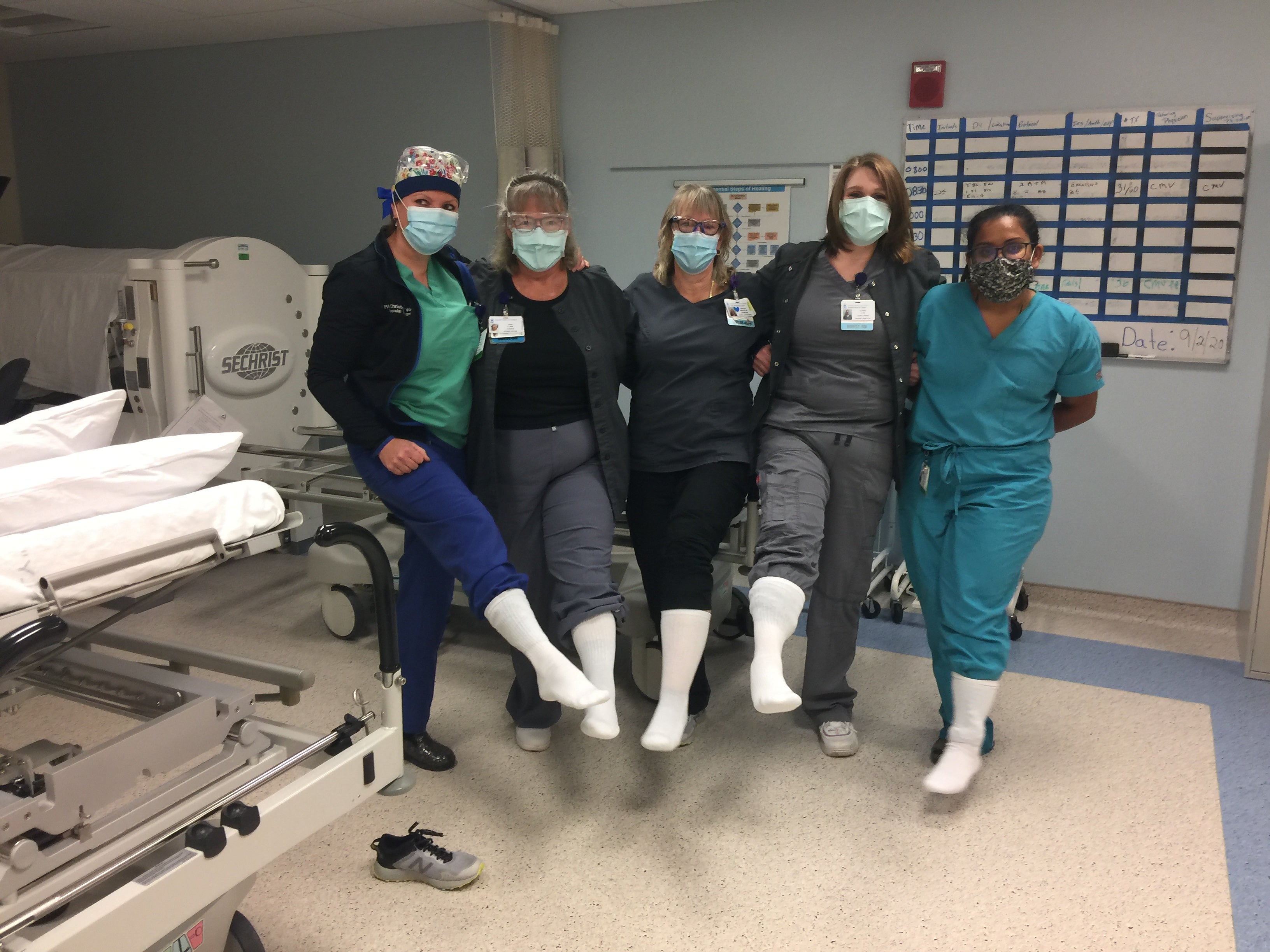September is PAD awareness month! Learn more about what peripheral artery disease is, including possible signs and symptoms, risk factors, and treatment options.
Signs & Symptoms of PAD
Do you commonly experience leg pain or cramps, particularly while walking or exercising? If so, does that pain improve when you rest?
Unexplained leg pain like this is the most common symptom of peripheral artery disease (PAD). PAD is a circulatory condition in which arteries are clogged with plaque, reducing blood flow to the affected extremities – most commonly the legs.
More than 8.5 million US adults ages 40 and older have PAD; although, many don't know it.
Other possible signs and symptoms of PAD include:
- Slow-healing sores on your toes, feet, or legs.
- Pale or bluish skin.
- A lower temperature in one leg than the other.
- Poor toenail growth.
- Poor hair growth on your legs.
- Weak pulse or no pulse in the legs or feet.
- Erectile dysfunction in men with diabetes.
Risk Factors
Your risk of PAD rises with age, since plaque builds up in your arteries as you grow older. High cholesterol, high blood pressure, and obesity all increase risk too. Smokers and people with diabetes are especially susceptible to PAD.
If you're at risk for PAD, it's important to know these four things:
- You shouldn't ignore signs or symptoms. Tell your doctor about your symptoms. PAD raises your risk for heart attack and stroke, so it needs to be treated.
- PAD is easily diagnosed. For example, your doctor may do a quick, painless test that compares the blood pressure in your ankle to the blood pressure in your arms.
- You can take control of PAD. A healthy lifestyle, medication, or a mixture of both may be enough to control your PAD symptoms. Eating a heart-healthy diet, being active (with guidelines from your doctor), controlling your diabetes if you have it, and quitting smoking can also help you manage your symptoms and treat your condition. Be sure to take any medicine your doctor prescribes exactly as directed.
- There are other treatments, if needed. If the steps above aren't sufficient, your doctor may advise a minimally invasive procedure — such as angioplasty — or bypass surgery to improve flow in the blocked artery. Be sure to discuss all your options.
The Wound Care Center team at Bassett Hartwick Seminary Specialty Services Spreads Awareness for PAD Awareness Month
 The Bassett wound care team at Hartwick Seminary Specialty Services shows support for the white sock campaign, a national campaign which aims to educate communities about peripheral artery disease.
The Bassett wound care team at Hartwick Seminary Specialty Services shows support for the white sock campaign, a national campaign which aims to educate communities about peripheral artery disease.
Visit vasculardiseasemanagement.com to learn more about the white sock campaign.
